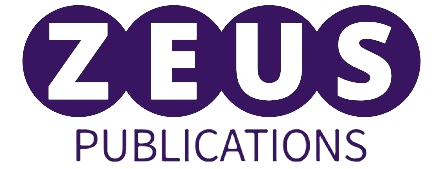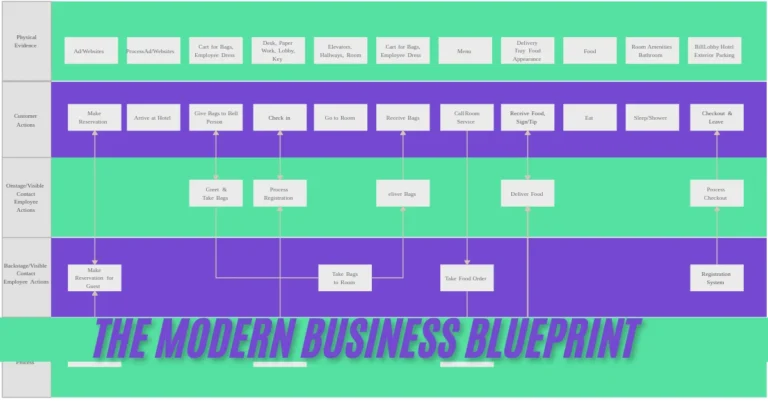Introduction: The Evolution of Business
The landscape of business is changing faster than ever. Gone are the days when a solid product and good marketing could guarantee success. Today, companies must navigate a complex web of consumer expectations, technological advancements, and shifting market dynamics. This evolution has given rise to what we now call “The Modern Business Blueprint.”
So what does this blueprint entail? It’s not just about financial gain; it’s about purpose-driven strategies that resonate with customers on a deeper level. As we delve into this innovative approach, you’ll discover how to build an organization that thrives in today’s fast-paced world while remaining adaptable for tomorrow’s challenges. Let’s explore the foundations of this modern framework and uncover the elements that can transform your business into one that’s truly future-ready.
Understanding the Shift: Traditional vs Modern Business Models
The landscape of business has transformed dramatically in recent years. Traditional models often relied on rigid structures and a one-size-fits-all approach. Companies operated under fixed hierarchies, with decisions flowing from the top down.
Modern business models embrace adaptability and responsiveness. They prioritize collaboration over hierarchy, fostering innovation through diverse teams that share ideas freely.
Customer engagement is another critical differentiator. While traditional businesses focused on transactions, modern enterprises build relationships by understanding customer needs and preferences.
Technology plays a vital role as well. Automation and data analytics empower companies to make informed decisions swiftly, enhancing efficiency across operations.
This shift reflects broader societal changes too—consumers demand transparency, sustainability, and personalized experiences now more than ever. Businesses that adapt will not only thrive; they will redefine what success looks like in today’s fast-paced world.
The Key Elements of a Modern Business Blueprint
A modern business blueprint hinges on several key elements that drive success.
Purpose and values form the foundation. They define what a company stands for beyond profit, guiding decisions and inspiring employees. This alignment fosters loyalty among customers who share similar beliefs.
Next is a customer-centric approach. Businesses today prioritize understanding their clients’ needs and experiences. Listening to feedback creates products that resonate with them, enhancing satisfaction and retention.
Technology integration is another critical aspect. Utilizing advanced tools streamlines operations and enhances communication, allowing businesses to adapt swiftly in a dynamic market.
An agile structure completes the picture. Flexibility empowers teams to innovate rapidly while responding effectively to changing demands or industry shifts.
Together, these components create a robust framework that supports sustained growth in an ever-evolving landscape of commerce.
A. Purpose and Values
Every modern business begins with a strong sense of purpose. This isn’t just about profit; it’s about making an impact. Companies today need to define why they exist beyond the bottom line.
Values play a critical role in this equation. They serve as guiding principles that shape company culture and decision-making processes. When employees resonate with these values, their engagement skyrockets.
A clear purpose fosters loyalty among customers too. People are drawn to brands that share their beliefs and strive for something greater than mere transactions.
Embedding purpose into every aspect—marketing, product development, and customer service—creates authenticity. It builds connections that go deeper than conventional business relationships.
In the competitive landscape of today’s market, having a well-defined purpose can set businesses apart from the crowd. It’s no longer enough to simply offer products or services; companies must embody what they stand for at every level.
B. Customer-Centric Approach
A customer-centric approach places the client at the heart of every business decision. It’s about understanding their needs, desires, and pain points.
This strategy transforms how companies interact with customers. Instead of merely selling products or services, businesses engage in meaningful conversations. They listen actively to feedback and adapt based on what they hear.
Personalization is key in this modern landscape. Tailoring experiences makes clients feel valued and understood. Whether through targeted marketing campaigns or customized service options, each touchpoint counts.
Moreover, cultivating long-term relationships fosters loyalty. Happy customers not only return but also become advocates for your brand. Their testimonials can be more powerful than any advertisement.
In a world filled with choices, a strong customer focus sets businesses apart from their competitors. When clients see that you truly care about them, trust builds naturally over time.
C. Technology Integration
Technology integration is at the heart of the modern business blueprint. It transforms operations, enhances communication, and streamlines processes.
Gone are the days when businesses relied solely on traditional methods. Today, digital tools enable real-time collaboration among teams scattered across different locations. Cloud computing allows for seamless data sharing and access from anywhere.
Moreover, automation plays a crucial role in increasing efficiency. Routine tasks can now be handled by software, freeing up human resources for strategic thinking and creative problem-solving.
Data analytics offers insights that were previously unattainable. Businesses can track customer behavior and preferences to tailor their offerings accordingly.
Investing in the right technology not only optimizes performance but also fosters innovation. Companies willing to embrace tech advancements position themselves as leaders in their industries. They attract talent who value cutting-edge environments where ideas flourish effortlessly.
D. Agile and Flexible Structure
An agile and flexible structure is essential in today’s fast-paced business landscape. Businesses must adapt quickly to market changes, customer needs, and technological advancements.
This approach allows organizations to pivot strategies without the heavy burden of bureaucratic processes. Teams can operate with greater autonomy, fostering innovation and creativity.
Moreover, an agile structure encourages collaboration across departments. This interconnectedness leads to faster decision-making and a more responsive organization overall.
Flexibility also means being open to remote work or hybrid models. In doing so, companies attract diverse talent while enhancing employee satisfaction.
Embracing agility positions businesses as leaders in their industries. It empowers teams to experiment, learn from failures, and continuously improve their offerings.
Benefits of Implementing a Modern Business Blueprint
Implementing a modern business blueprint brings numerous advantages. It fosters innovation by encouraging creative problem-solving and adaptability. Companies become more responsive to market changes, allowing them to seize opportunities quickly.
A customer-centric approach enhances relationships with clients. Businesses that prioritize customer needs see increased loyalty and engagement, leading to higher retention rates.
Technology integration streamlines operations and boosts efficiency. By utilizing the latest tools, companies can automate processes, reducing costs and freeing up resources for strategic initiatives.
Moreover, an agile structure promotes collaboration across teams. This dynamic environment empowers employees to share ideas freely, resulting in enriched company culture and productivity.
Aligning purpose and values strengthens brand identity. When businesses clearly communicate their mission, they attract like-minded customers who resonate with their vision.
Real-Life Examples of Successful Modern Businesses
Companies like Airbnb and Tesla exemplify the power of a modern business blueprint. Their innovative approaches have reshaped their respective industries.
Airbnb disrupted traditional hospitality with its platform, connecting travelers to unique accommodations worldwide. By focusing on user experience and community-driven values, they created an entire market segment that didn’t exist before.
Tesla transformed the automotive landscape by emphasizing sustainability and cutting-edge technology. Their direct sales model bypasses dealerships, enhancing customer relationships while driving innovation in electric vehicles.
Netflix serves as another stellar example. Initially a DVD rental service, it pivoted towards streaming content based on consumer demand. Its data-driven decisions ensure personalized experiences for viewers.
These businesses showcase adaptability and a strong commitment to purpose—elements vital for success in today’s fast-paced environment. They inspire others to rethink conventional methods and embrace change wholeheartedly.
Challenges and How to Overcome Them
Transitioning to a modern business blueprint brings challenges that can feel daunting. Resistance to change is one of the most common hurdles. Employees may be hesitant, fearing their roles will shift or become obsolete.
Open communication is essential here. Engage your team early in the process and encourage feedback. When they understand the vision and see their value, resistance diminishes.
Another challenge lies in technology integration. New tools can seem overwhelming at first. Provide adequate training tailored to various skill levels within your organization.
Additionally, maintaining agility while scaling operations can pose difficulties as well. Establish clear processes but remain adaptable to prevent stagnation in an ever-evolving market.
Measuring success with new models often feels uncertain. Develop key performance indicators (KPIs) that align with your updated objectives for clarity on progress and areas needing adjustment.
Conclusion: Embracing the Future of
The landscape of business is ever-evolving. As we navigate this dynamic environment, embracing a modern business blueprint becomes essential for sustained success. It’s not just about keeping up; it’s about leading the way.
Businesses today must be anchored in purpose and values that resonate with their customers. A strong foundation creates loyalty and trust, which are invaluable in a crowded market. The focus on customer-centric approaches ensures that businesses remain relevant by genuinely addressing consumer needs.
Technology plays a pivotal role as well. Integrating advanced tools streamlines operations and enhances communication, allowing companies to respond swiftly to changes in demand or trends. Moreover, an agile structure enables teams to pivot quickly when necessary, fostering innovation rather than stifling it.
Implementing these strategies offers numerous benefits—improved efficiency, greater employee satisfaction, and increased profitability among them. Real-life examples demonstrate how organizations thrive by adapting to these new paradigms.
However, challenges will arise along the journey toward modernization. Resistance to change can impede growth but can be overcome through open dialogue and education within the organization.
Embracing the future of business means being proactive rather than reactive. By adopting a modern business blueprint now, companies position themselves not only for survival but for thriving in the years ahead.
FAQs
Q: What is The Modern Business Blueprint?
Ans: It’s a streamlined one-page business model template designed to help businesses clarify their strategy and adapt to current market demands.
Q: Who can use The Modern Business Blueprint?
Ans: This blueprint is ideal for entrepreneurs, small business owners, and consultants looking for an effective way to map out their business strategies.
Q: How does The Modern Business Blueprint differ from traditional business plans?
Ans: Unlike lengthy traditional plans, this blueprint offers a concise format that captures essential elements, making it easier to use and adapt.
Q: Can I customize The Modern Business Blueprint for my specific needs?
Ans: Yes, the blueprint is designed to be flexible, allowing you to tailor it to fit your unique business model and objectives.
Q: Where can I access The Modern Business Blueprint template?
Ans: The template is available for download on our website, provided in an editable PDF format for easy customization.

